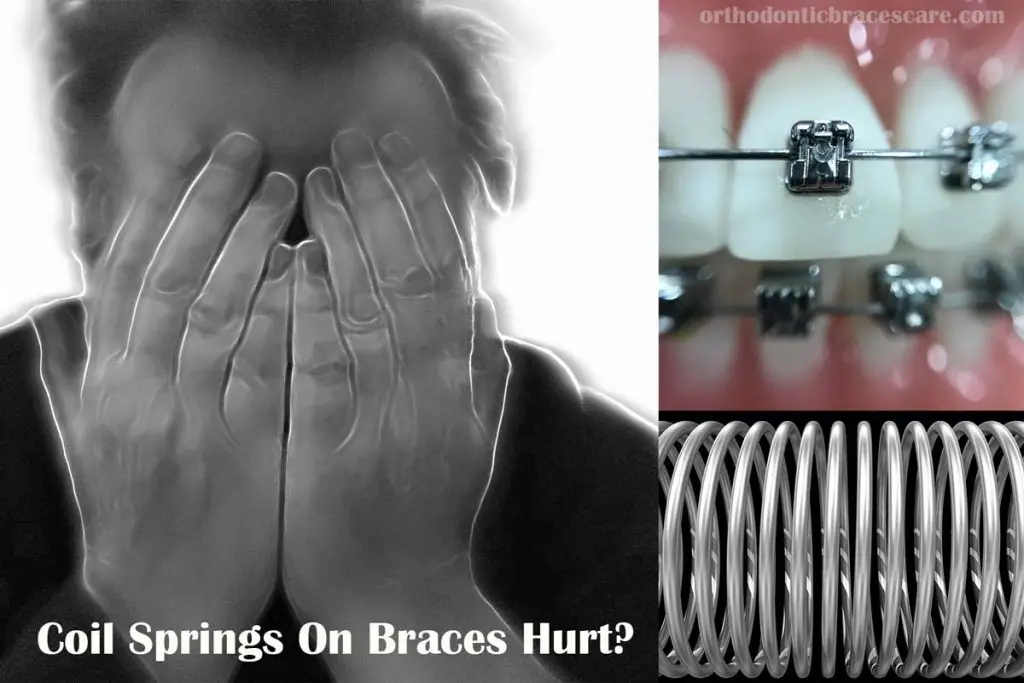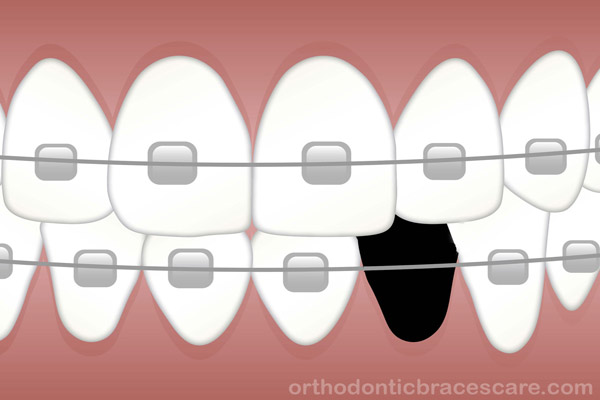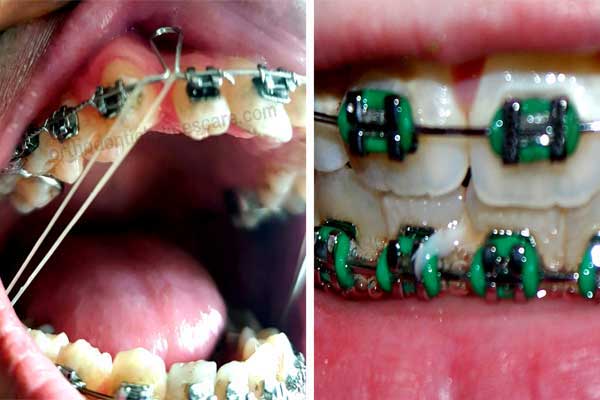It is common to feel pain after getting braces. But what about coil springs on braces? Do coil springs on braces hurt?
Pain from coil springs depends on which types of coil springs. Some springs hurt a bit and some don’t hurt at all. Usually, however, it goes away with time normally. But, if you feel serious or continuous pain and discomfort, there may be due to broken springs, poking hook, and others.
Here, we’ll discuss which types of coils springs may hurt you and when there may be a painful condition and how long it persists. You’ll also know how to deal with the pain.
Which types of coil springs are painful?
Types of coil springs determine if you will feel pain from them. Active coil springs, whether it’s open or closed, may hurt your teeth after their activation. However passive coil springs don’t you at all.

To understand it clearly, you need to know, “What do coil springs do and what are the types?”
There are three types of coil springs such as open, closed, and passive.
Your orthodontist will decide whether you need a coil spring on braces or not. You may need one of the above springs according to your condition of teeth.
He will use open coil springs when it’s necessary to create space between your certain teeth.
Open coil springs are those types of springs that are compressed and placed between your teeth. As springs have the tendency to get back to their normal shape, they push the teeth and help create space.
On the other hand, closed coil springs do the opposite. These springs help close the space between your teeth. The orthodontists may use them to close the gap after the extraction of teeth for orthodontic treatment.
The closed coil springs are extended and placed between the teeth. When they try to get back to their normal form, they move the teeth and help close the gap.
Active springs (open and closed springs) may hurt a bit after getting attached to your braces, as they are putting pressure on teeth and bone.
Another type is passive coil springs. The orthodontist uses them to maintain a space between your teeth. That means, they don’t move your teeth, rather they hold your teeth in the current position.
When they are placed between the teeth, they are neither compressed nor extended. So, when your teeth tried to shift in the gap, springs prevent them.
If you have passive springs, they shouldn’t hurt that much.
From this point, we’ll discuss active coil springs in the rest of the article.
How long do coil springs on braces hurt?
Usually, coil springs on braces hurt for a few days to weeks after their activation. Then, you may not feel that much discomfort the rest of the time. However, it may be uncomfortable for you to eat with coil springs.
If you don’t like to wear them, you may want to know how long you have to wear coil springs.
When do coil springs on braces hurt?
Let’s discuss this by dividing the timeline of using coil springs.
Do coil springs on braces hurt during attaching coil springs?
If you need the coil springs, your orthodontist will prepare all instruments and springs and give you an appointment.
On the day of the appointment, he or she will check your treatment progress and do measurements for the placement of springs.
Then, your orthodontist and his or her assistant will attach the coil springs on your braces and activate them.
You may feel mild discomfort during the procedure. After activation, you’ll feel some pressure on your teeth.
Then, you feel mild pain starting on that day which may remain for a few days to weeks. Over time, you’ll get used to the feeling of the coil springs.
The reason for pain or discomfort is the force provided by the springs, as they try to get back to their previous form. This is helpful for your orthodontic treatment.
This pressure helps move the teeth. When force is applied to the teeth, bone is dissolved on the side or under pressure, and new bone is formed on the opposite side. So, the tooth gets a path to move along the bone.
Sometimes, you might be worried if the springs cut or damage inside of your cheek. But, it shouldn’t happen, if your orthodontist attaches them properly.
So, always visit a qualified orthodontist. Still, if it causes any problem, tell your orthodontist and he or she’ll correct it.
Moreover, one tooth pain after braces can be caused by coil springs because of the above causes.
Rest of the time wearing coil springs
When you get used to the feelings of your coil springs, you may not feel any problem. However, eating may be uncomfortable sometimes. But, you also get used to it over time.
Sometimes, your springs can be damaged and you may feel pain if you don’t follow the instruction provided by your orthodontist.
Damage can happen during eating or if you miss an appointment with your orthodontist. It may hurt your teeth or the inside of your mouth. Consult your orthodontist and he or she’ll fix it.
Do coil springs hurt during the removal of coil springs?
It may one of the happiest days during your braces treatment period when your orthodontist decides to remove coil springs completely.
Removal of coil spring shouldn’t hurt you. It’s exciting to see the change after the removal of the springs, especially when it’s used to close the gap.
After this procedure, your orthodontist performs the next planned procedure.
Why do coil springs on braces hurt?
Here are the reasons for which coil springs on braces hurt:
1. Activation pressure
Activation force is the main cause of your feeling pain from the springs. As coil springs are used to apply additional force on your teeth to move them, your teeth and jaw bone will feel that extra pressure.
2. Poking braces hook
You get hooks on your braces to attach the springs and the hooks may hurt your cheek. Sometimes, the hook may rub or poke your cheek and sometimes can tear it.
Know more about braces hooks hurting.
3. Roughness of spring
As springs are made of metal, they may rub inside your cheek during the movement of your mouth. Sometimes, it may hurt your mouth.
4. Broken spring
Sometimes, when your coil spring is accidentally broken or damaged, you may have a broken piece of it on your braces. That portion of spring can hurt your cheek, lips, or gums.
5. Eating hard and sticky food
When you eat hard food, it put more pressure on your braces and teeth. So, if you already have pain from springs, you will feel more pain or it may trigger pain as well.
Moreover, sticky food or candies are stuck on the springs and result in damage to them. This may also be responsible for pain in the long run.
6. Wrong toothbrushing approach
If you don’t follow the appropriate method of brushing teeth with springs, it may damage springs and cause pain.
How to relieve pain from braces coil springs?
As it’s normal to feel mild pain after getting coil springs, you shouldn’t be worried about that. Here are the tips to relieve pain from braces coil springs:
1. Use dental wax
If the coil springs on braces hurt your soft tissue or inside your mouth, you can use dental wax over the spring to prevent further damage.
In that case, you should visit your orthodontist’s office as soon as possible and the wax till that time.
You also use wax to prevent the orthodontic hooks from poking your cheek.
Check Out The Best dental wax for braces.
2. Take an over-the-counter pain reliever
If you can’t tolerate the pain, you should follow the pain-relieving procedure or medications advised by your orthodontist. You can also take an over-the-counter pain reliever.
3. Fix broken coil springs
If you have broken coil springs, make sure that you fix them. Consult your orthodontist for the proper solution.
Know how to fix broken coil springs.
4. Fixing poking hook
If your braces hook isn’t positioned properly and tears or hurts your mouth, you should use dental wax for temporary pain relief. However, you have to seek your orthodontist for a permanent solution.
5. Stay away from hard and sticky foods
Avoid hard and sticky foods that can damage the braces or coil springs. Besides, eating an apple or burger needs to open your mouth wide which can damage the springs.
6. Eat soft and braces-friendly foods.
Take soft and liquid foods such as – soup, yogurt, smoothies, mashed potatoes, oatmeal, soft fruits, etc.
You can also check this article on how to eat with springs.
7. Follow proper tooth cleaning methods
Follow the appropriate technique of brushing and flossing teeth with braces coil springs. Take help from your orthodontist and take care of the braces.
Conclusion
In brief, it’s normal to feel mild pain and discomfort for days to weeks after activation of braces coil springs. Then, it resolves over time, as you habituate to it over time. However, you should follow your orthodontist’s advice to prevent any damage to the coil springs which may result in pain or sore teeth or mouth.


